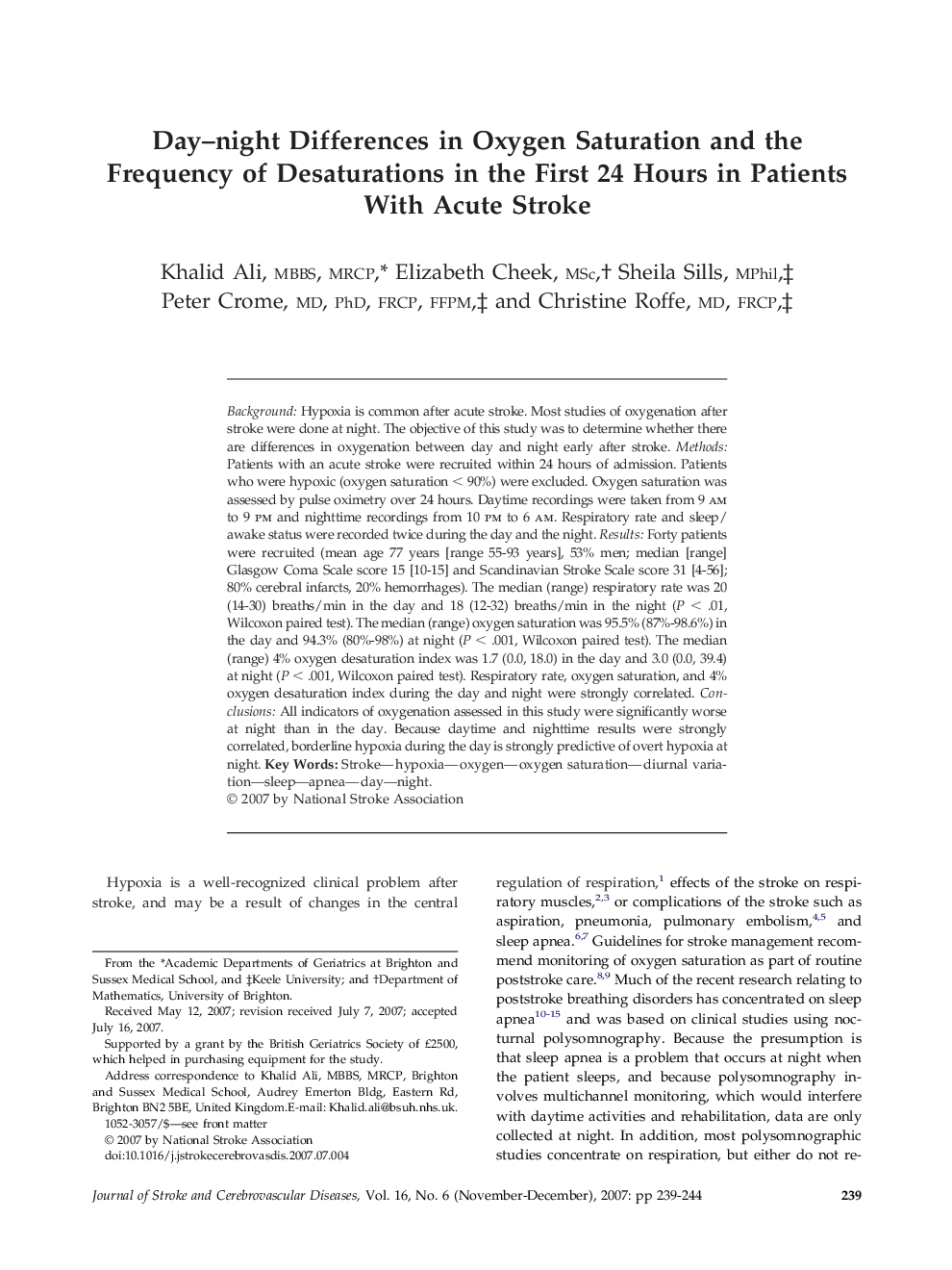| کد مقاله | کد نشریه | سال انتشار | مقاله انگلیسی | نسخه تمام متن |
|---|---|---|---|---|
| 2704676 | 1144698 | 2007 | 6 صفحه PDF | دانلود رایگان |

Background: Hypoxia is common after acute stroke. Most studies of oxygenation after stroke were done at night. The objective of this study was to determine whether there are differences in oxygenation between day and night early after stroke. Methods: Patients with an acute stroke were recruited within 24 hours of admission. Patients who were hypoxic (oxygen saturation < 90%) were excluded. Oxygen saturation was assessed by pulse oximetry over 24 hours. Daytime recordings were taken from 9 am to 9 pm and nighttime recordings from 10 pm to 6 am. Respiratory rate and sleep/awake status were recorded twice during the day and the night. Results: Forty patients were recruited (mean age 77 years [range 55-93 years], 53% men; median [range] Glasgow Coma Scale score 15 [10-15] and Scandinavian Stroke Scale score 31 [4-56]; 80% cerebral infarcts, 20% hemorrhages). The median (range) respiratory rate was 20 (14-30) breaths/min in the day and 18 (12-32) breaths/min in the night (P < .01, Wilcoxon paired test). The median (range) oxygen saturation was 95.5% (87%-98.6%) in the day and 94.3% (80%-98%) at night (P < .001, Wilcoxon paired test). The median (range) 4% oxygen desaturation index was 1.7 (0.0, 18.0) in the day and 3.0 (0.0, 39.4) at night (P < .001, Wilcoxon paired test). Respiratory rate, oxygen saturation, and 4% oxygen desaturation index during the day and night were strongly correlated. Conclusions: All indicators of oxygenation assessed in this study were significantly worse at night than in the day. Because daytime and nighttime results were strongly correlated, borderline hypoxia during the day is strongly predictive of overt hypoxia at night.
Journal: Journal of Stroke and Cerebrovascular Diseases - Volume 16, Issue 6, November–December 2007, Pages 239–244